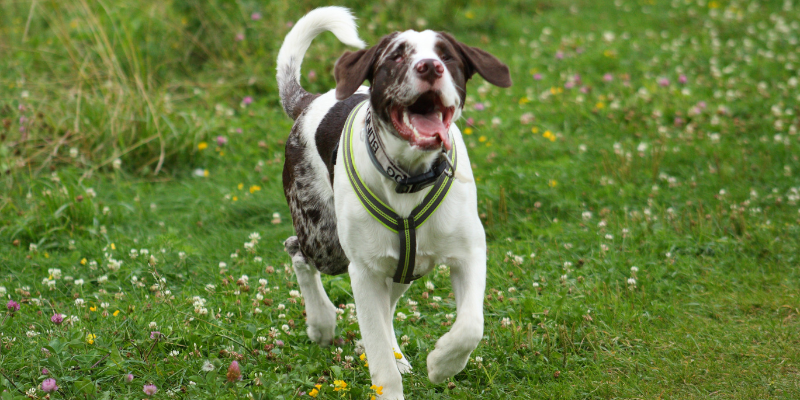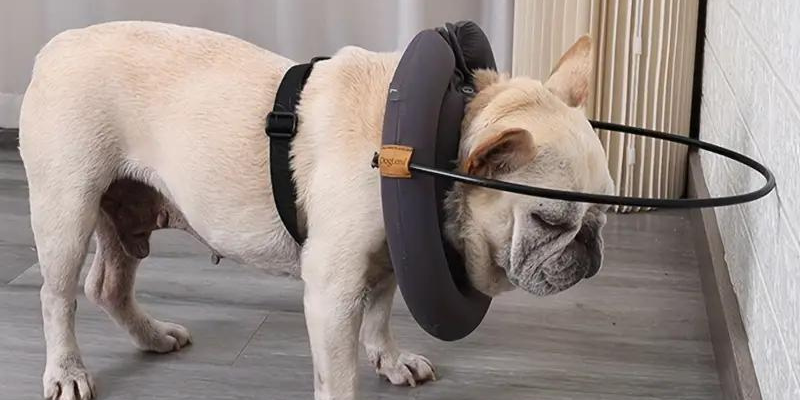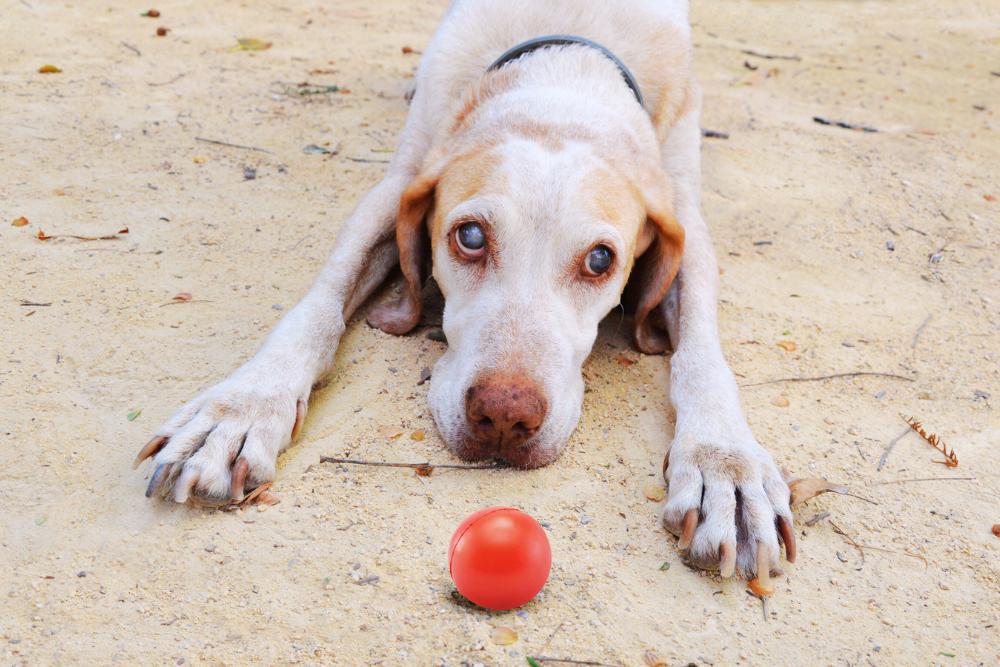For thousands of years, dogs have been known for their powerful senses, but unfortunately, much like humans, they too can experience sensory loss in both their hearing and vision. These types of losses are never easy, and as a dog owner, it can start to feel extremely challenging and overwhelming as you navigate this new normal. But it is important to remember that your canine companion deserves to live out the rest of their life being happy and content, and that dear dog owners is all up to you!
Let’s take an in-depth look at how to identify sensory loss in dogs, and several tips on how to support your dog after they have been diagnosed with a form of sensory impairment.
Sensory Loss in Dogs Explained
Sensory loss in dogs is relatively common, and while the exact prevalence rates may vary, several dog breeds are predisposed to certain types of sensory loss, especially as they age.
Now, imagine the impact that sensory loss has on your dog. Hearing loss, in particular, can lead to your dog not being able to respond to commands or warnings, and this can leave them feeling confused, stressed, anxious, and frustrated.
Similarly, blindness can also have a huge impact on your dog’s well-being, especially if they now have to find their way through settings that were once familiar to them.
The good news is that despite the challenges that dogs are faced with when sensory loss affects them, they can adapt quite easily to their new situation by relying on some of their other senses. As a responsible dog owner, you must support your dog during this stage of their lives and be able to accommodate their special needs.
The Causes of Sensory Loss in Dogs

When a dog owner realizes that their dog is suffering from sensory loss, they may have many questions as to how it happened. Truth be told, there is usually nothing that the dog owner has done wrong. It is quite simply caused by several factors such as aging, certain environmental factors, and genetics. Let’s take a deeper look into each of these factors:
Genetics
Some dog breeds are genetically predisposed to sensory loss. An example is Dalmatians, who are born with white coats and blue eyes. Dalmatians, along with Australian Cattle Dogs and Bull Terriers a more prone to congenital deafness. Additionally, dogs with short noses (brachycephalic breeds) such as pugs and bulldogs, are more at risk for certain eye conditions.
Age-Related Changes
Sensory loss is a normal phenomenon as mammals age, and like humans, senior dogs too can experience sensory loss such as hearing and vision impairment that can affect their overall quality of life.
Trauma or Injury
Sensory loss can also be caused by traumatic events such as head injuries and prolonged exposure to loud noises. As a result, these traumas can damage the structure of the ear or the eye, and in turn lead to permanent sensory loss.
Infections
Temporary or permanent sensory loss can also be caused by infections, especially if these infections are left untreated. Dog owners must always take their dogs to the vet if they suspect an eye or ear infection.
Other Medical Conditions
If your dog suffers from other medical conditions such as diabetes or autoimmune diseases, they can also be more at risk of developing sensory loss.
Identifying Sensory Loss in Dogs
Dog owners need to be aware of the signs that could indicate that their dog is experiencing sensory loss. When it comes to hearing loss, these signs can include your dog suddenly not responding to their name when you call them, and also failing to react to loud noises, especially if they used to react to the same noises before.
Dogs who are battling with their vision will sometimes struggle to navigate places that have always been familiar to them and may even bump into certain objects.
The Impact of Sensory Loss on Dogs

Dogs who become sensory impaired, sometimes battle to understand what is happening to them, which could cause them increased feelings of anxiety, and perhaps even aggression.
Sadly, if not dealt with properly, these dogs may hurt themselves, or even exhibit signs of changed social behavior in their relationships with people and other animals.
How to Support a Deaf Dog
It is paramount that as a dog owner, you make sure that the environment around your dog is safe. This means, using a leash during walks and securing your property to make sure that your doggo won’t wander off.
It is completely possible, to train your deaf dog by using visual cues such as hand gestures. Gentle vibrations can also work to help your dog understand that you are communicating with them.
Additionally, use positive reinforcement such as treats and praise to help your furry friend understand that they are exhibiting the desired behavior.
Supporting a Blind Dog
A blind dog will always thrive on consistency, which is why dog owners must refrain from moving furniture or items that are kept in familiar places! Also, you can make use of essential oils and perfumes to act as scent markers and help your doggo to identify different areas in the house. Toys and other items that are safe for dogs can also be used as tactile stimulation, meaning that they will enhance your pet’s overall sensory experience.
Caring for a Dog with Both Hearing and Vision Loss

In some cases, a dog may end up losing both their hearing and vision yet may other than that seem completely healthy! As a dog owner, it is important to consider your dog’s well-being by creating a safe environment to prevent unnecessary accidents from occurring.
Here are some tips for creating a safe environment:
Remove Obstacles
If you have obstacles in your home that could be dangerous to your sensory-impaired dog, then it is time to clear them out or move them out of the path that your dog follows to get around your home.
Use Tactile Markers
Tactile markers allow your dog to find areas within the home. For instance, you can have a fluffy carpet placed at the entrance to the kitchen where your dog’s food bowl is, or perhaps a plastic mat that shows them where the door leads to the garden.
Provide A Safe Sleeping Area
It is crucial to make sure that your dog has access to a safe and comfortable sleeping area. It is in this sleeping area, that they can rest without the risk of injury. Try to place your dog’s bed in a quiet and soothing part of the home.
Use Baby Gates
Just like baby gates protect babies and children from hazardous parts of the home, so too can they prevent your furry friend from entering places where they can hurt themselves, such as staircases and swimming pool areas.
Provide Mental Stimulation
A dog who has a sensory impairment can often become bored and unstimulated. As a dog owner and their pet parent, you must find the time to engage with your fur baby in activities that can help them keep mentally sharp and prevent boredom.
Connecting with Your Sensory-Impaired Dog
Owning a dog is all about connection, and it is no different when you own a sensory-impaired dog. It is important to practice a lot of patience and to understand that your dog is also trying to come to terms with their impairment.
Be a guiding light for your pup and use positive reinforcement and reward-based training to renew your dog’s sense of trust and confidence.
Losing hearing or sight can be a scary time for your doggo, so be sure to give them lots of love and attention, making their transition to this new stage of life as easy as possible.
This is where your dog’s sense of touch comes in. Even if your dog has been diagnosed with a hearing or sight impairment, the soft touch of their loved ones is bound to summon a good reaction and warm their heart a bit.
Never underestimate the power of touch, especially when your dog is feeling anxious and confused. Pet them, love them, cuddle them, and show your dog that you are both in this together!
Health and Wellness for Sensory-Impaired Dogs

Continue to take your dog for regular checkups at the veterinary clinic so that they can monitor your dog’s overall health, as well as address any problems that may be directly related to their sensory impairment.
Your dog should still be exercising, eating a balanced and nutritious diet, and playing with interactive toys and games to keep them entertained and occupied.
Resources and Support for Owners
Dog parents can support their doggos by seeking out resources that offer important information and support while they and their pet adjusts to their new circumstances.
Joining online communities and forums for owners of sensory-impaired dogs can provide valuable support and advice. These communities can offer tips on training techniques, product recommendations, and emotional support for owners facing similar challenges.
Professional training and rehabilitation services are also available to help owners and dogs adapt to their sensory impairment.
Here are some recommended books and websites:
Books
“Living with a Deaf Dog: A Book of Advice, Facts, and Experiences About Canine Deafness” by Susan Cope Becker – In this book, dog owners will be able to get some advice on how to live with their hearing-impaired dog. It also covers a variety of communication strategies that can be used to better communicate with your dog.
“Living With Blind Dogs: A Resource Book and Training Guide for the Owners of Blind and Low-Vision Dogs” by Caroline Levin – This book will give its readers information on how to properly care for a dog that is vision impaired. It also gives dog owners tips on how to create a safe environment for their canine companions.
Websites
Deaf Dogs Rock (deafdogsrock.com) – This website is perfect for dog owners who would like access to resources, articles, and a community forum to keep in touch with other dog owners who own a dog that is hearing impaired.
Blind Dog Rescue Alliance (blinddogrescue.org) – This is an organization that gives the owners of blind canines support and advice. It also offers a range of resources to help dog owners to better cope with the situation.
The American Kennel Club (akc.org) – This wonderful website gives its visitors access to several articles and resources that are related to dog health. It includes information on how to deal with sensory loss in dogs.
Embracing a New Normal
Caring for a dog that is battling with a form of sensory loss can indeed be hard at first, especially, if you have not walked the journey before. But on the other end of the spectrum, you have the opportunity to bond with your furry companion by learning new things together, practicing patience, and providing them with as much love as you can.
If you stay positive, so too will your dog. Don’t let a sensory impairment get in the way of helping your pup live their best life!
“A dog will teach you unconditional love. If you have that in your life, things won’t be too hard.” – Robert Wagner








